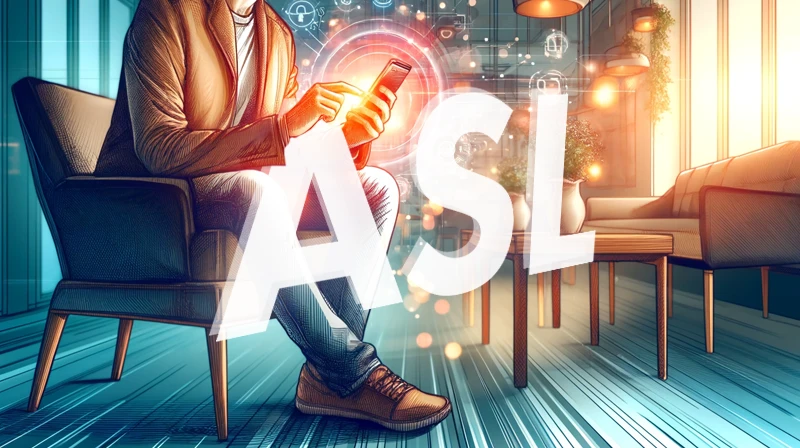When you see "ASL" in a text message or online conversation, you might wonder what it means. This abbreviation can have multiple meanings depending on the context. Let’s break it down and explore its most common uses in a way that's easy to understand.
What Is the Most Common Meaning of ASL?
The most widely recognized meaning of "ASL" in text and online chats is "age, sex, location". This abbreviation became popular in the early days of online chatrooms and forums, especially during the 1990s and early 2000s. People would use ASL to quickly ask someone their age, gender, and where they are from. For example:
- Person 1: Hi! ASL?
- Person 2: 21, female, New York
This phrase helped people get to know each other without typing long questions. However, it’s worth noting that asking for personal details like this is less common today because people are more cautious about privacy.
Is It Safe to Share Your ASL?
Sharing personal information like your age, gender, and location can be risky, especially with strangers online. Be careful and think about who you’re talking to before revealing details about yourself. It’s always okay to say no or avoid the question if you feel uncomfortable.
Other Meanings of ASL
While age, sex, location is the most common meaning, ASL can stand for other things too. Here are a few alternative meanings:
American Sign Language
In some contexts, "ASL" refers to American Sign Language, which is a complete language used by the Deaf and hard-of-hearing community. If the conversation is about communication, language, or accessibility, this is likely the intended meaning.
For example:
- Person 1: Do you know ASL?
- Person 2: Yes, I’m learning it in school.
As Hell
Another modern and informal use of "ASL" is as an abbreviation for "as hell". People use it to emphasize something. It’s more common on social media platforms like Twitter or Instagram. For example:
- I’m tired ASL.
Here, ASL adds emphasis, meaning the person is very tired.
Should You Use ASL?
Using ASL can depend on the platform and audience. While it’s still recognized, some of its uses, like age, sex, location, feel outdated in modern texting. Younger people today might not even recognize this meaning because online culture has shifted.
If you want to connect with someone, it’s better to ask specific questions. For example:
- Instead of ASL? say: "Where are you from?"
- Instead of saying "I’m tired ASL," simply write: "I’m so tired."
Being clear and direct makes communication easier and more friendly.
Conclusion
ASL is a simple abbreviation with multiple meanings that depend on how and where it’s used. It can mean "age, sex, location," "American Sign Language," or "as hell." Understanding the context is key to figuring out its meaning in any conversation.

![The Most Cost-Effective AI Coding Agents in [year]: Claude, Cursor, Windsurf, or Antigravity?](https://www.devcrea.com/uploads/2025/12/cost-effective-ai-coding-agents-comparison-antigravity.webp)





Comments (0)
Sign in to comment
Report